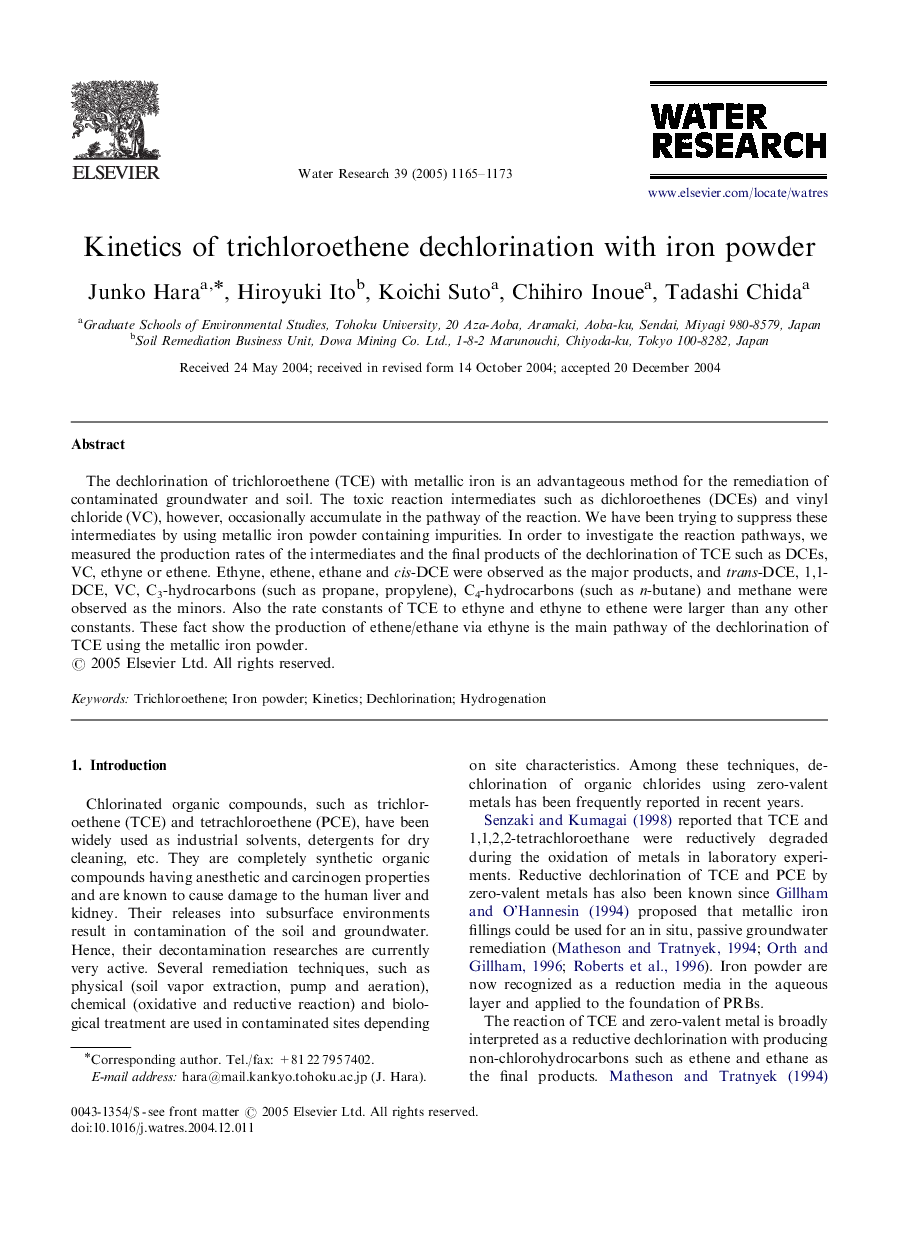| Article ID | Journal | Published Year | Pages | File Type |
|---|---|---|---|---|
| 9468239 | Water Research | 2005 | 9 Pages |
Abstract
The dechlorination of trichloroethene (TCE) with metallic iron is an advantageous method for the remediation of contaminated groundwater and soil. The toxic reaction intermediates such as dichloroethenes (DCEs) and vinyl chloride (VC), however, occasionally accumulate in the pathway of the reaction. We have been trying to suppress these intermediates by using metallic iron powder containing impurities. In order to investigate the reaction pathways, we measured the production rates of the intermediates and the final products of the dechlorination of TCE such as DCEs, VC, ethyne or ethene. Ethyne, ethene, ethane and cis-DCE were observed as the major products, and trans-DCE, 1,1-DCE, VC, C3-hydrocarbons (such as propane, propylene), C4-hydrocarbons (such as n-butane) and methane were observed as the minors. Also the rate constants of TCE to ethyne and ethyne to ethene were larger than any other constants. These fact show the production of ethene/ethane via ethyne is the main pathway of the dechlorination of TCE using the metallic iron powder.
Related Topics
Physical Sciences and Engineering
Earth and Planetary Sciences
Earth-Surface Processes
Authors
Junko Hara, Hiroyuki Ito, Koichi Suto, Chihiro Inoue, Tadashi Chida,
